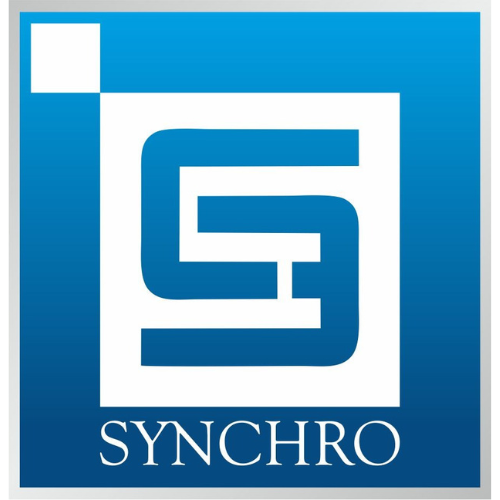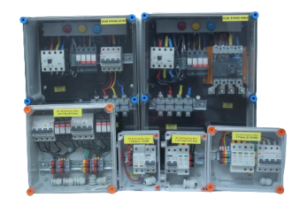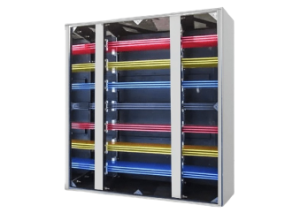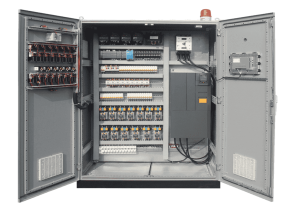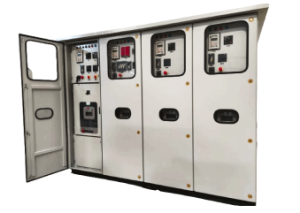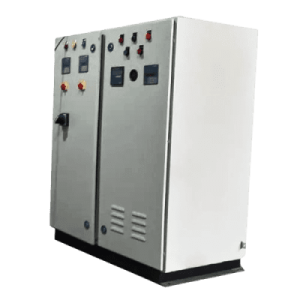India is experiencing a renewable energy revolution, and at the forefront of this transformation is the Commercial & Industrial (C&I) solar sector. As businesses aim to reduce electricity costs and meet sustainability goals, solar energy adoption among commercial and industrial units has witnessed a remarkable surge.
However, the success and safety of these solar systems rely on more than just photovoltaic (PV) panels and inverters. One critical, yet often overlooked, component is the ACDB (Alternating Current Distribution Board) and DCDB (Direct Current Distribution Board). These panels play a crucial role in power distribution, system protection, and efficient monitoring.
Let’s explore the growth of the C&I solar segment in India and why advanced ACDB/DCDB panels are pivotal to the long-term reliability and performance of solar systems.
The Rise of C&I Solar in India
1. Policy Push and Cost Competitiveness
India’s energy demand is expected to double by 2040. In response, the Indian government has laid a strong foundation for solar adoption through supportive policies like:
- Accelerated depreciation benefits
- GST relief on solar components
- Open access solar policies
- Green energy corridors
- Renewable purchase obligations (RPOs)
Alongside this, the cost of solar installation has dropped significantly in the last decade, making it a cost-competitive option for industries and businesses compared to grid electricity.
2. High Commercial Tariffs Drive Solar Adoption
Many Indian states have high electricity tariffs for commercial and industrial users, ranging from ₹7 to ₹12 per unit. In contrast, solar energy offers power at ₹2.5 to ₹4 per unit, generating 30-60% savings on electricity bills. This economic benefit has led major industries, manufacturing units, corporate parks, and warehouses to invest in rooftop and open-access solar systems.
3. Net Metering and Grid Integration
With policies allowing net metering, businesses can sell excess power back to the grid, further improving ROI. As more C&I units opt for grid-tied solar systems, the importance of system safety, power quality, and effective energy monitoring increases.
Understanding ACDB & DCDB Panels in Solar Systems
What is a DCDB (Direct Current Distribution Board)?
The DCDB panel receives DC power from solar panels and routes it to the inverter. It helps in:
- String-level protection using fuses or MCBs
- Monitoring of individual string currents
- SPD (Surge Protection Device) for overvoltage protection
Isolation of strings during maintenance
What is an ACDB (Alternating Current Distribution Board)?
The ACDB panel is installed after the inverter. It manages the distribution of AC power to the grid or local loads and provides:
- Overcurrent and short-circuit protection
- Energy metering and load balancing
- SPD and isolators to ensure safe grid injection
Seamless integration with net meters
Both these boards act as protective backbones, ensuring that power flows safely, equipment remains unharmed, and operators are protected from faults or overloads.
Why Advanced ACDB/DCDB Panels Matter in the C&I Segment
C&I solar systems are typically large—ranging from 50 kW to multiple MWs. With scale comes complexity. Here’s why advanced, high-quality ACDB/DCDB panels are non-negotiable:
1. Enhanced System Safety
Industrial environments are susceptible to power surges, short circuits, and high-load fluctuations. Poor-quality panels can:
- Fail under high temperatures or current loads
- Cause fire hazards
- Lead to inverter and module damage
Advanced panels use high-grade copper bus bars, certified breakers, flame-retardant enclosures, and branded surge protection devices to ensure maximum safety.
2. Real-Time Monitoring and Diagnostics
Modern ACDB/DCDB units integrate IoT-enabled monitoring systems, allowing:
- String-level performance tracking
- Energy data logging
- Remote fault detection
- Preventive maintenance scheduling
This intelligent monitoring helps O&M teams quickly detect performance issues and ensure 99%+ uptime, critical for ROI in large C&I systems.
3. Customization as per Project Needs
No two C&I projects are alike. Factors like:
- Rooftop or ground-mounted layout
- Inverter capacity
- Number of strings
- Export-import metering requirements
All demand custom-designed ACDB/DCDB panels tailored for specific site conditions. Advanced manufacturers offer modular, scalable designs for seamless integration.
4. Ease of Commissioning and Maintenance
Professionally manufactured panels come pre-wired, pre-tested, and tagged for faster on-site commissioning. Labels, testing ports, and breaker layouts are optimized for easy access, ensuring quick troubleshooting and safety compliance.
5. Compliance with International Standards
Modern C&I projects demand bankability and compliance. Investors, EPCs, and DISCOMs prefer panels that follow:
- IEC/IS standards
- BIS certifications
- IP65/IP67 protection levels
- Type-tested assemblies
Using advanced ACDB/DCDB panels ensures that the overall project passes audits, safety checks, and performance guarantees with ease.
Synchro Electricals: Powering C&I Solar with Smart Panels
As India transitions into a green economy, panel manufacturers like Synchro Electricals Pvt. Ltd., based in Rajkot, Gujarat, are leading the charge in offering premium-quality ACDB/DCDB panels for solar EPCs and industries.
Founded in 2018, Synchro Electricals specializes in:
- Custom ACDB/DCDB solutions for rooftop and ground-mounted projects
- Panels tested to international safety and performance standards
- Dedicated support for project commissioning and documentation
Whether you’re an EPC contractor, solar consultant, or industrial consumer, partnering with a reliable panel manufacturer ensures system longevity, safety, and higher yield.
Contact Synchro Electricals
+91 96019 65426
Plot No. 35 to 40, Ravaki Rev. Sur. No. 670, Pushti Parishar Industrial Area, Near Maa Khodal Ind-1, Ravki, Taluka Lodhika, Rajkot, Gujarat, India – 360004
Closing Insights
The C&I solar boom in India is not just about clean power—it’s about smart, safe, and scalable solutions. As system sizes and complexity grow, advanced ACDB and DCDB panels are no longer optional—they are essential.
From ensuring safety and performance to enabling smart monitoring, these panels are the backbone of a reliable solar installation. Investing in quality from the start saves costs, minimizes risks, and maximizes returns.
For industries eyeing a sustainable future with solar, the choice is clear: Prioritize panel quality, partner with experts, and power your growth with confidence.
FAQ
Q1: Can we use a standard electrical panel instead of an ACDB/DCDB in solar systems?
Q2: What certifications should an ACDB/DCDB panel have?
Q3: How often should ACDB/DCDB panels be maintained?
Q4: Are ACDB/DCDB panels useful in off-grid solar setups?
Q5: How do I choose the right ACDB/DCDB panel for my C&I project?
